What is indie?
From The Smiths to Nirvana, Oasis to Arctic Monkeys, indie has established itself as a mainstay in the library of most modern listeners. We know about the changes and developments within the genre but what about the guitars that have been used?
Indie music originated as the underdog to mainstream, delivering an umbrella for the undercurrent of music to fall under. Since then, the genre has gone from strength to strength, usurping mainstream genres and reigning over the music scene.
With a multitude of definitions and parameters, indie music cannot simply be defined by the same terms as rock and pop. This lack of definition has led to the inception of multiple subgenres and variations.
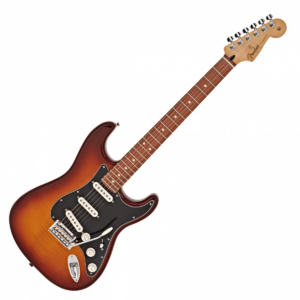
While these days a lot of indie artists are signed to record labels, the original definition of indie was an artist producing and releasing music on their own. This is why a lot of indie music, even to this day, sounds unpolished and a little rough around the edges, but some attribute this lo-fi aspect to be one of the genre’s charms.
This search for individuality and the ambition to express personality has seen the genre feature a wide collection of guitars throughout its time. From classics such as the Fender Stratocaster all the way to bold and out-there models such as the Vox Phantom Special, the genre has seen it all.
Let’s have a look through the history of the genre and explore its unique axes.
The birth of indie
 While there isn’t a definitive day to mark the start of indie as a genre, we can deduce that it began in the late 1970s, coming as a result of the post-punk era, with artists such as Joy Division, Buzzcocks, and Depeche Mode leading the way. This, however, poses a problem.
While there isn’t a definitive day to mark the start of indie as a genre, we can deduce that it began in the late 1970s, coming as a result of the post-punk era, with artists such as Joy Division, Buzzcocks, and Depeche Mode leading the way. This, however, poses a problem.
Excluding Warsaw by Joy Division which is very much like the post-punk of Buzzcocks, all three artists found a sound that was completely different to one another.
Indie was born but it had no clear indication of what it really was, or what it wanted to be.
If we were to attempt to pinpoint the year when indie was truly conceived, 1978 is the most obvious choice.
1978 saw the release of Love Bites by Buzzcocks, An Ideal for Living by Joy Division, and the creation of Rough Trade Records, an independent label, which played a monumental role in the genre within the next decade.
So, what instruments were these pioneers using? Pete Shelley, singer and guitarist of Buzzcocks, used a Gibson Marauder, which is an incredibly rare model. Manufactured for a short period of time between 1975 and 1979 before being discontinued, all in all, only roughly 7000 models were produced.

Designed to compete with the growing popularity of Fender guitars, the Marauder is aesthetically similar to a Les Paul but features a bolt-on neck as opposed to a set-neck, and instead of two humbuckers, it opts for a humbucker/single-coil setup. Gibson then presented the Les Paul Junior model in later years, possibly the best modern alternative to Shelley’s sound.
Bringing us into the next decade was the first true stylistic example of what indie would grow to be. Love Will Tear Us Apart (1980) displays a lot of indie’s soon-to-be defining features: glistening synths, sombre vocals, and light, but articulate, guitar playing.
Within the production of the single, Curtis used a Vox Phantom Special, a guitar that offered bold design and unique electronics. Using onboard effects, the Vox came with an in-built fuzz, tremolo, and repeat percussions. This gave the guitar an almost metallic sonic landscape, which contributed to the overall aesthetic of the song’s sound.
Both of these artists solidified Manchester as the epicentre for indie, especially in the UK, and the city was only just getting going.
The mainstream is dead
The 1980s was an important time for indie. The decade saw the genre find its footing and stick the landing, developing greater importance in the music scene. Indie would also spread across the globe. Until now, it had primarily been a creation of the United Kingdom, but it would soon become a genre of focus for America too.
Alongside this solidification of the genre, we begin to see the adoption of what may be seen now as “indie guitars”.
The Smiths
Indie’s development during this decade continues where we left off, in Manchester. Rough Trade Records had started to release music across the UK and Europe, but it was their work with Manchester outfit The Smiths that highlighted their role within the establishment of the genre.
The Smiths are seen as one of the most influential artists, if not the most influential, in solidifying the position of indie music. Following the prototype laid down by Joy Division, they completely subverted the mainstream. They refused to use the synths like their pop music contemporaries, delivered social and political observations through Morrissey’s melancholic voice, and supported these lyrics with Johnny Marr’s iconic arpeggiated chords, which reverberate with complete resonance.
Epitomised by the release of the album The Queen is Dead (1986), indie had found a voice, and from here it only diversified.
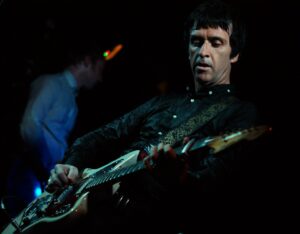 Johnny Marr is known for his incredibly unique playing style. Completely bypassing the conventions of classic rock, Marr avoided using booming power chords, and instead opted for a jingle of glistening notes.
Johnny Marr is known for his incredibly unique playing style. Completely bypassing the conventions of classic rock, Marr avoided using booming power chords, and instead opted for a jingle of glistening notes.
This unique style was supported in the early years of his career with a 1954 Fender Telecaster, which he used during the recording of The Queen is Dead, though he was stylistically associated with a Rickenbacker 330.
Since then, Marr has become synonymous with his Jaguar. The offset model has been utilised over the years by Marr thanks to its tonal characteristics. Using two single-coil pickups at the neck and bridge, it delivers that iconic twang in abundance, freeing every note to chime with the presence Marr requires for his individualistic, ground-breaking sound.
Marr has used a wide variety of models, but his prominence with the Jaguar has seen Fender release a signature model for the iconic guitarist.
Indie in America
Developments of a different breed of indie had begun in the United States. After forcing its way into American culture, punk began to decline, and was, instead, replaced by the development of America’s own branch of post-punk.
At the time, “The Second British Invasion” was well underway with artists such as Billy Idol, Dire Straits, and The Police, rising to the forefront of American music. The influence of British music forced a similar counter-reaction in the underground of the American music scene.
This led to the arrival of artists such as Pixies and REM, both of whom gave US musicians a footing in the genre.
Peter Buck, lead guitarist of REM, used a Fender Telecaster during their initial conception, but he is primarily known for his use of Rickenbackers, especially the Rickenbacker 360. A classic rock guitar, this model comes with a pair of hi-gain pickups, which accentuate every note and every chord with the utmost clarity. An unconventional hollow-body shape also helped to influence the band’s sound with a breathy aspect, perfect for indie rock.
Britpop and grunge – the start of the subgenres
Indie had always been the underdog, the alternative to popular music, but what happens to indie when it becomes popular? Well, it takes over.
Jumping to the 1990s, The Smiths had disbanded, and Manchester was no more – it had been replaced by “Madchester”. Artists such as The Stone Roses, The Charlatans, and Happy Mondays had infused indie with dance, driving the genre to the forefront. Clubs, therefore, adopted the music of these artists, as well as pop music.
The timeline and overall definition of indie started to shatter during this period, as external influences took hold of the genre’s direction. To avoid confusion, it should be noted that indie became more of an all-encompassing term for music that wasn’t conventionally pop.
This is why the idea that indie ‘relates to an independent artist’ was no longer applicable, and pop music kind of became the undercurrent – a baffling concept, I know, but bear with us here. . .
Nirvana
Over in America, in a small city called Aberdeen, a shift was beginning to happen. A three-piece punk band started to explore their sound and merge melodic lyrics with the hard rock of Black Sabbath. This band was, of course, Nirvana.
Leading a pocket of bands such as Pearl Jam, The Smashing Pumpkins, and Soundgarden, the band managed to establish a new sub-genre: grunge. With the release of the album Nevermind, a tidal wave was formed, sweeping not only the US but the world.
Who could’ve seen that power chords, unclean riffs, collections of dissonant notes, and messy solos all emitted from Kurt Cobain’s Jaguar would be a recipe for mainstream success?
A second appearance for the Jaguar, Kurt’s model differed in nearly every aspect from that of Johnny Marr’s. Noticeable changes included the use of humbuckers, which allowed for higher octane tones, better suited to Nirvana’s heavily distorted chordal patterns. A delightful rosewood fingerboard provided perfect playability and a clever switching system made the guitar a unique companion.
Fender still recreate the model to this day, offering a Kurt Cobain signature Jaguar to all Nirvana enthusiasts. This makes it incredibly easy to capture his sound.
Kurt was given the opportunity by Fender to create a completely unique model, which resulted in the Jag-Stang. While Kurt only used a prototype of the model before his passing, he was heavily involved in ensuring the guitar was perfectly suited to his sound.
Initial designs were created by Kurt – cutting in half an image of both a Fender Mustang and Jaguar and sticking the two halves of the different models together. And so, the Jag-Stang was born. The Jag-Stang provides an authentic Fender feel – whilst still being unique – thanks to a conventional alder-body construction and recognisable 7.25″ radius rosewood fretboard.
Oasis
On the other side of the Atlantic, back in Manchester, a rival to distortion-led, powerful rock had begun to surface. Dismayed by both the surge of grunge in the US and the prominence of shoegaze in the UK, a yearning for melodic vocals, clean lead lines, and chiming chords started Britpop.
Aiming to rediscover the heyday of British music, this breed of alternative rock took heavy inspiration from the 1960s, influenced by bands such as The Beatles, The Kinks, and early Pink Floyd. But, ultimately, Britpop became a battle between two bands: Oasis and Blur.
The guitars used by artists in this genre also reflected the past. Noel Gallagher, lead guitarist of Oasis, is often pictured using a Gibson ES. Inspired by John Lennon’s Epiphone Casino and Johnny Marr’s use of the ES-355 in the track “Heaven Knows I’m Miserable now”, the semi-hollow body design and humbuckers at the bridge and neck ensure a lighter tone with impeccable articulation.
The sound perfectly reflects the feel that the movement was aiming to recreate, delivering an absence of high-distortion riffs which, in turn, meant the guitar could produce clean chords with no hum.
Blur, however, featured Fender Telecasters. Thanks to two single-coils at the neck and bridge, the twang of the Telecaster perfectly captured the lighter sound that Britpop was searching for. However, the Telecaster model utilised by lead guitarist Graham Coxon was slightly modified, and its unique construction led Fender to create a signature model for the guitarist. These days, the guitarist is usually seen playing a deluxe Tele.
The Noughties
Indie music was now at the forefront of the modern music scene, with artists such as Oasis and The Red Hot Chilli Peppers obtaining platinum-certified albums and selling out arenas worldwide. This success spurred on the inception of a multitude of new subgenres.
In America, bands such as Foo Fighters and Bush rose from the ashes of grunge. Simultaneously, a punk revival was stampeding towards the mainstream in the form of pop-punk, including artists such as Blink-182 and Green Day. Pop-punk would eventually morph into emo, defined by the likes of Paramore, Fall Out Boy, and My Chemical Romance.
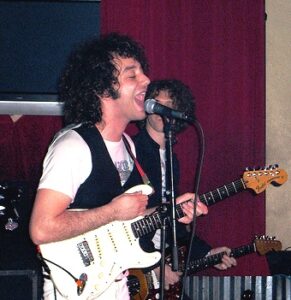 This diversification was only the beginning.
This diversification was only the beginning.
Other subgenres began to split off, too. In New York, bands such as The Strokes applied their own spin to the punk foundations set by the likes of The Velvet Underground, embellishing it with the progress created by bands like Nirvana.
The guitars featured in these variations of indie rock are often similar to their predecessors’ choices of instruments.
The Strokes, for example, followed suit of the Brits in the 1990s, using a semi-hollow body in the form of an Epiphone Rivera. This became Nick Valensi’s signature guitar, although at times he opted for the Telecaster model. Both of these designs had, at this point, become a staple of indie rock.
In the UK, artists picked up the mantle that had been placed down by Oasis, Blur, and The Smiths, with one example being Arctic Monkeys. They gained recognition thanks to the release of the album Whatever People Say I Am, That’s What I’m Not, a meteoric rise due to their promotion and activity on social media website MySpace.
Other UK bands that appeared around this time included Bloc Party, Biffy Clyro, and The Kooks, all of which also enjoyed incredible mainstream success domestically.
Arctic Monkeys frontman Alex Turner has used a multitude of different guitars during his time at the forefront of British indie rock. In the early days of Arctic Monkeys’ success, he opted for a white Fender Stratocaster, which gave the original album its classic, jangly sound, perfectly accentuating the record’s upbeat rhythms and driven lead lines.
 Since Alex Turner was influenced by The Strokes guitarist Albert Hammond Jr., it could be a direct correlation that he used the same coloured instrument. The Stratocaster’s ability to chime chords with impeccable accuracy makes it easy to dictate intricate strumming patterns, an important characteristic in their early repertoire and, of course, indie music during this era.
Since Alex Turner was influenced by The Strokes guitarist Albert Hammond Jr., it could be a direct correlation that he used the same coloured instrument. The Stratocaster’s ability to chime chords with impeccable accuracy makes it easy to dictate intricate strumming patterns, an important characteristic in their early repertoire and, of course, indie music during this era.
In later releases, Turner moved to a Gibson Les Paul, a transition that embodied their progression to thicker tonal textures in albums such as Suck it and See, and this owed to the increased depth provided by the model’s dual humbucker setup. These shifts in their sound have also seen the use of other models, such as a Gretsch in “R U Mine?” and a Fender Bronco on stage.
Modern indie music
So, in terms of modern indie musicians, what instruments are often used? Well, the answer now is almost every model. . . but we know that’s not the answer everyone is looking for.
Offset guitars have become a genre convention for indie rockers of the modern era, with a multitude of guitarists using them as their primary instrument. Usually in the form of a Fender Mustang, Jaguar, or Jazzmaster, the success of these instruments has been universal with both American and UK artists alike.
The versatility of offset guitars is one of the main reasons they have been widely adopted amongst alternative guitarists. A variety of switching systems means the tonality of these instruments can often be shaped to the exact preference of the performer.
Notable modern indie users of these instruments include Alex Trimble of Two Door Cinema Club (Jazzmaster), Ellie Rowsell of Wolf Alice (Mustang), and Lindsey Jordan of Snail Mail (Jaguar).
 Of course, these instruments have appeared throughout the history of indie – we have already noted this in the cases of Johnny Marr and Kurt Cobain.
Of course, these instruments have appeared throughout the history of indie – we have already noted this in the cases of Johnny Marr and Kurt Cobain.
Many other influential figures from the genre’s past have, too, wielded offset Fenders. Bilinda Butcher of My Bloody Valentine was an advocate of the Mustang model, Billie Joe Armstrong and Noel Gallagher have used the Jazzmaster, whilst Brian Molko of Placebo and John Squire of The Stone Roses often utilised Jaguars.
The thing with modern indie music is that it’s incredibly diverse. The genre has grown and has produced an incredible number of offshoots, and it keeps on expanding.
In terms of guitars, this means that most are applicable due to the inclusive nature of the style. From the classics to the completely outlandish, every guitar has its place somewhere under the umbrella term of indie.
However, one issue that guitars do have with modern indie music is that they are slowly becoming less important to the makeup of the genre. Don’t worry they aren’t disappearing, but with the increased use of synthesisers, thanks to the well-established genre of indie pop and the fascination with pop music of the 1980s, guitars now play a lesser role. This obviously coincides with developments in synthesiser technology, made more accessible with DAWs.
Conclusion
As we can see, there has been a multitude of guitars used throughout the history of indie, and the diversity of the genre has led to the inclusion of many more. As the undercurrent of the music scene, the developments of the instruments have often not been spearheaded by the leaders of the genre, but, rather, the most prominent users have influenced the landscape of certain instruments.
Offset and semi-hollow body guitars have frequently stood at the forefront of the indie music scene, thanks to their crystal-clear tonalities and versatile sounds. These two builds of guitars excel at everything an indie musician could ask of their instrument.
If you are an indie-head yourself and looking for the perfect instrument for you, it’s best to consider what instrument will suit your sound. Looking at the history of the genre and examining its conventions can aid you with this decision. We hope to have helped here.
If you want to find out more about the models we have mentioned, check out the links below!
Shop now | Fender Jaguar
Shop now | Fender Telecaster
Shop now | Fender Stratocaster
Shop now | Rickenbacker
Shop now | Gibson Les Paul
Shop now | Gibson ES range
Shop now | Epiphone Hollowbodies


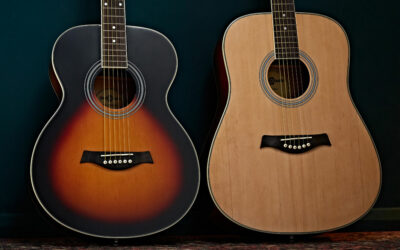
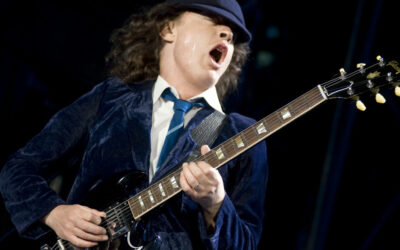

Hi!
I LOVED this article! Indie is my favourite style of music!!!
However, my favourite brand of guitar is Ibanez, and I don’t see it uttered here! I’m wondering if you know of any indie guitarists that use them?
Cheers!
Hi Tim,
I’m glad that you enjoyed the article!
This is a very good question; the answer isn’t too clear. While I am certain that many indie musicians have picked up and played an Ibanez guitar, their appearances within the timeline of indie and alternative rock are few and far between.
There a few names who are currently using Ibanez models. although these artists extend into sub-genres that hold only a link to indie, these are; Chris Miller of You Me at Six using his signature model the CMM2, Mike Duce guitarist of Lower Than Atlantis, and Dexter Holland of The Offspring.
But perhaps the most notable name I am aware of is John Frusciante. John used an RG model in the early days of The Red Hot Chilli Peppers, although he is more commonly associated with Fender models, he did use this guitar in recording sessions for the album Mother’s Milk.
I hope this helps.
Let me know if you have any more questions.